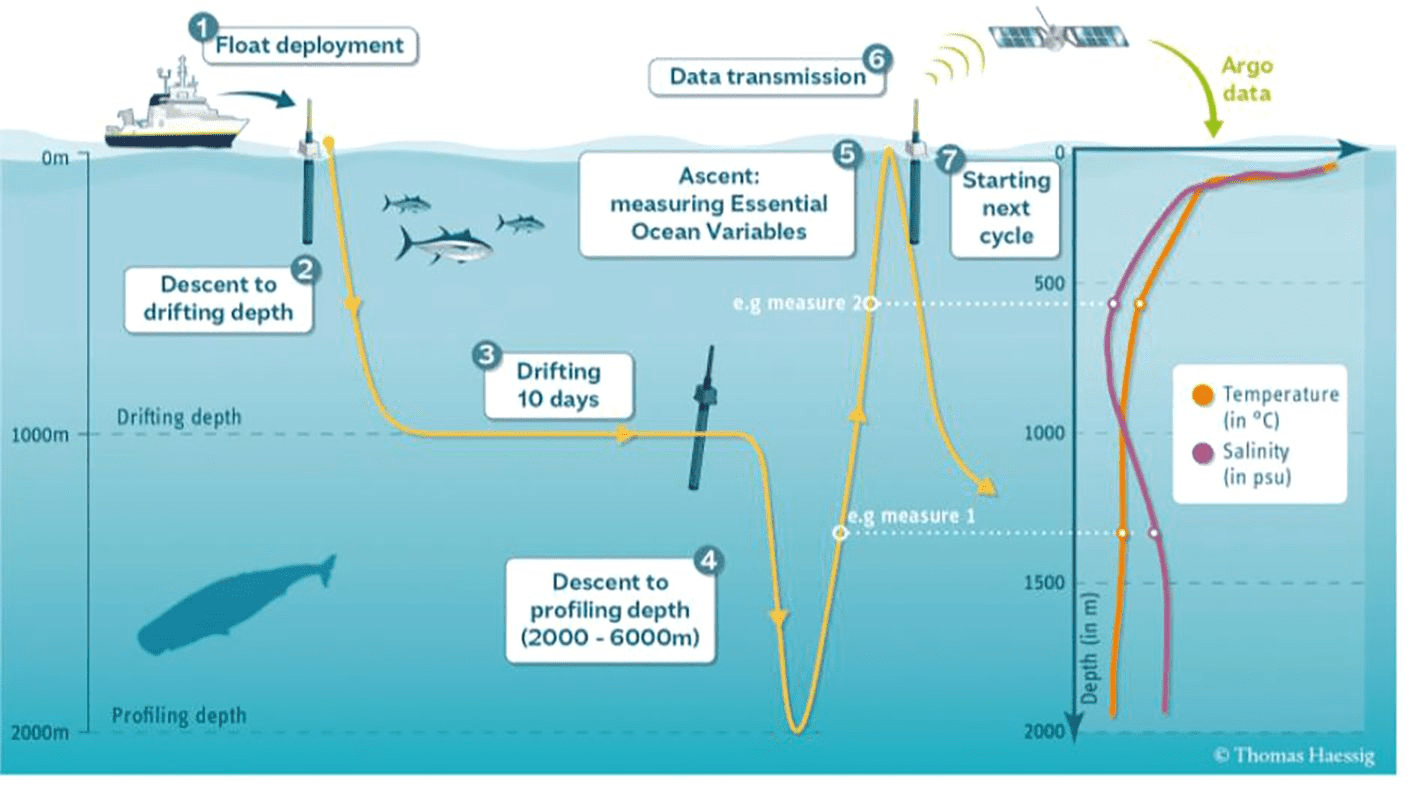Morris, T., Scanderbeg, M., West-Mack, D., Gourcuff, C., Poffa, N., Bhaskar, TVSU, Hanstein, C., Diggs, S., Talley, L., Turpin, V., Liu, Z., and Owens, B., (2024) Best practices for Core Argo floats - part 1: getting started and data considerations. Front. Mar. Sci. 11:1358042. https://doi.org/10.3389/fmars.2024.1358042
Morris, T., Scanderbeg, M., West-Mack, D., Gourcuff, C., Poffa, N., Bhaskar, TVSU, Hanstein, C., Diggs, S., Talley, L., Turpin, V., Liu, Z., and Owens, B., (2024) Best practices for Core Argo floats - Part 2: physical handling, deployment and metadata considerations. Front. Mar. Sci. 11:1358048. https://doi.org/10.3389/fmars.2024.1358048

The primary objective of the Argo Program, established with the first Argo float deployments in 1999, was to uniformly deploy Argo floats in all the ocean basins, acquiring data from the upper 2000 dbar of the world’s ocean every 10 days (Roemmich et al., 2019). The Core Argo Mission has significantly advanced our understanding of the upper 2000 dbar of the global oceans (Wong et al., 2020). This paper looks to highlight the Core Argo float mission, and to encourage the continued and enhanced support of established Core Argo members (be they countries, regions or research teams), but also to engage with and encourage new users to the program. New users are able to provide deployment opportunities in regions difficult to access, procure new Argo floats to work towards the OneArgo targets or make use of the freely available data acquired thus far by Argo, showing its worth to existing funders. Schematic by Thomas Haessig.
